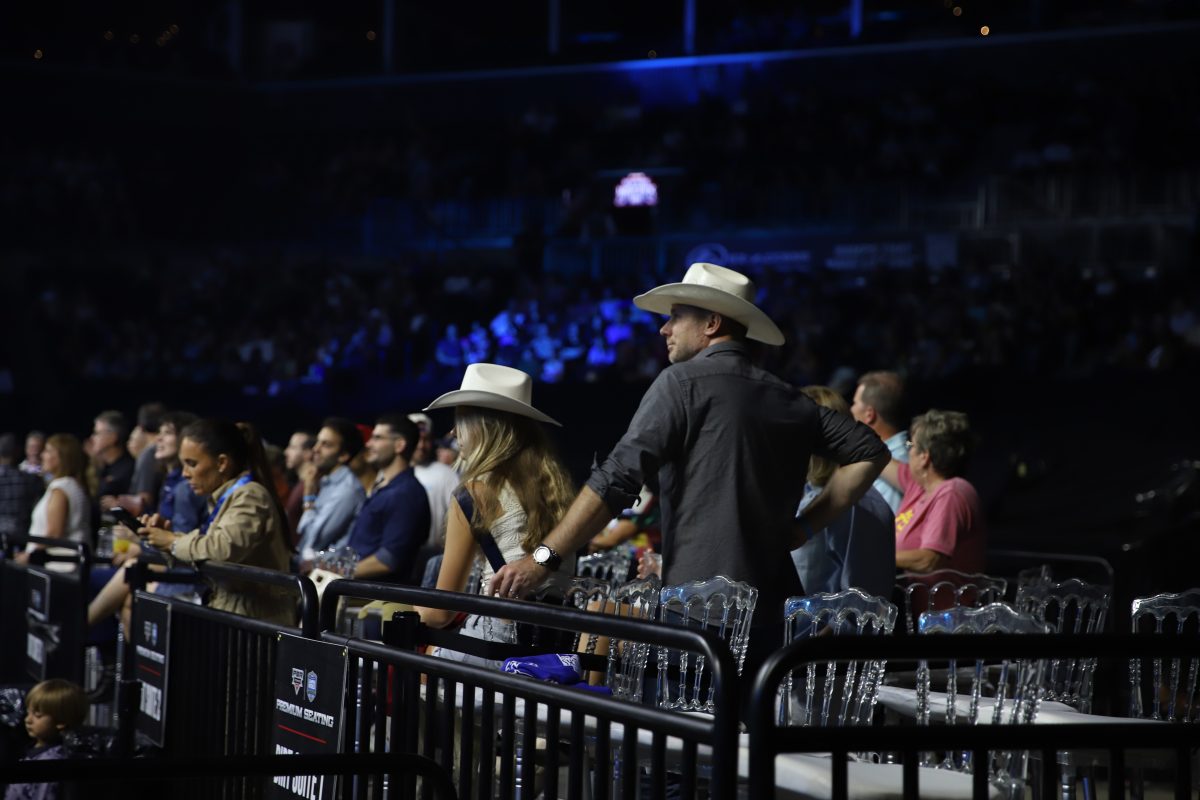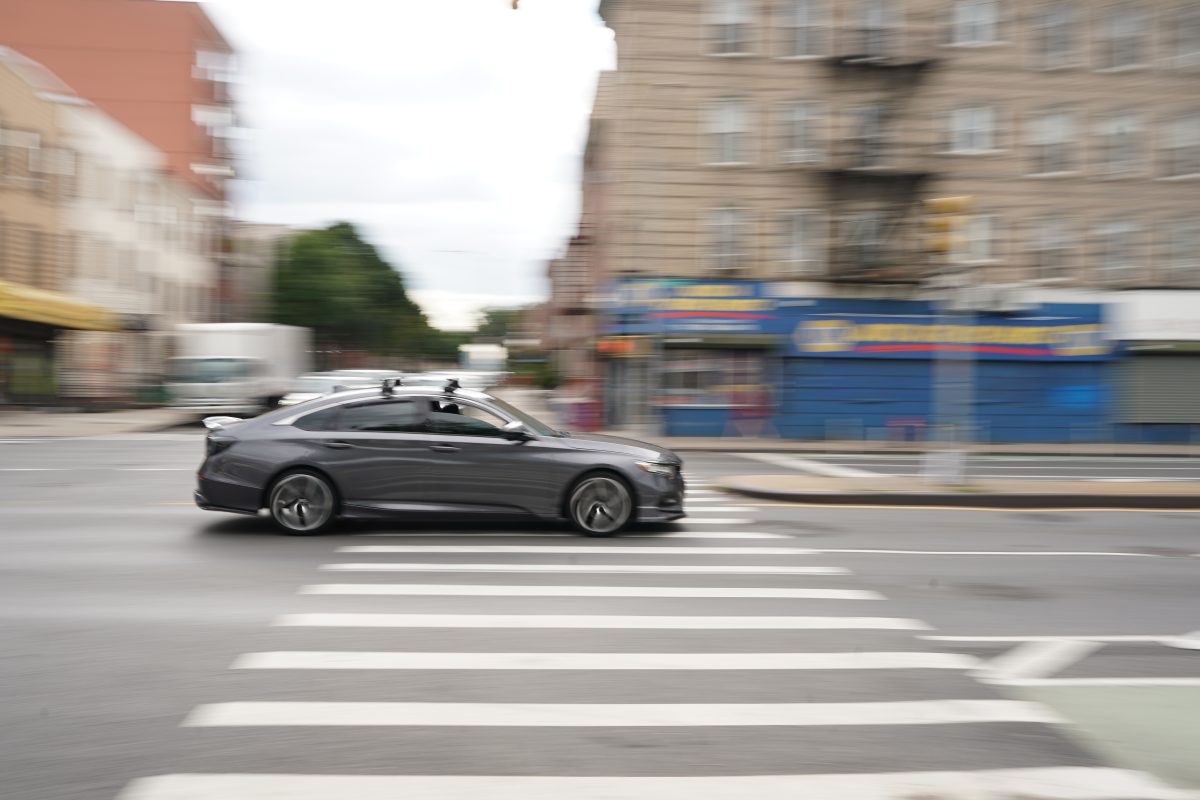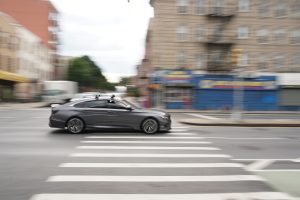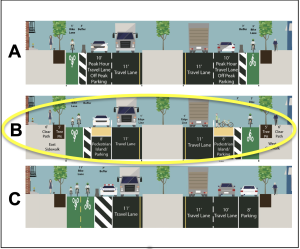No Shirt, No Shoes, No Problem; Professional Bull Riding Makes Itself Right at Home in Downtown Brooklyn
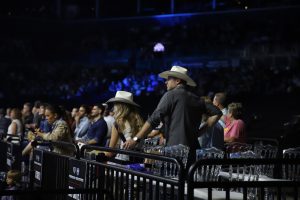
Photo Credit: Alexander Bernhardt Bloom
By Alexander Bernhardt Bloom | alex@queensledger.com
As the 2024 Olympic games entered their final weekend of events this month they drew the eyes and attention of spectators from all around the world to Paris, where they looked on with glee for a chance to see their compatriots compete at the highest level in famed contests, but also the more niche, obscure, and unfamiliar ones. The same was true for those whose eyes and attention kept it right here in the home boroughs that Friday and Saturday evening, in attendance at the Barclays Center to see representatives of cities around the US square off in a sport never before played in New York City: Professional Team Bull Riding.
The reasons as to why never before are fairly obvious. Bulls and their pastures and the wranglers who chase them with lassos or mount them for recreation are figments of the Old West, not so wild nor so distant from the rest of the country now, but nevertheless, a tradition whose origins are far removed from the harbored metropolitan islands of New York City.
But the country’s biggest spectator sports market beckons, and so were founded the New York Mavericks, in their inaugural season the most recent franchise addition to the PBR Team Series league, now in just its third year. Bull Riding as a pastime, of course, has existed for a far longer time, rodeos and bucking beasts a vivid part of our collective imagination in this country. The organization Professional Bull Riders was founded in 1992 in an effort by riders and promoters in the rodeo world to bring bull riding more into the mainstream. The group has since grown enormous, the scale of events and the number of attracted spectators ballooning over three decades. Today, PBR hosts competitive events all over the world featuring its more than 800 registered pro-riders, regularly introducing new competitions, crowns and bull-riding formats to crowds on various continents.
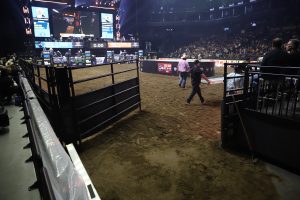
Photo Credit: Alexander Bernhardt Bloom
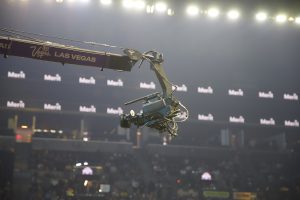
Photo Credit: Alexander Bernhardt Bloom
THE TEAM SERIES was one of these inventions. The competitive play goes like this: two teams of riders and their bulls, five apiece, trade turns taking a mount, achieving a score only if the rider manages to last a full eight seconds or more atop the bull and without using any of the forbidden methods to help them while they’re at it. Just one hand is to be used to grip the rein wrapped around the bull’s neck while the other is held in the air with a boastful insistence. It becomes less boastful quickly if the rider uses it to touch the bull’s back or the ground, or if he reaches with it for the rein in desperation or is cast altogether from the bull to the surface below, all of which will result in a score of zero points gained for the rider and his team both. Those who manage the full eight seconds by permissible means are awarded points in collaboration with the bull they are riding. The animals are categorized as “players” as well, and carry their names, records and titles with them to each new arena match.
The metrics for scoring the performance of the rider players consider the time they last but also the resistance they display and the confidence they hold themselves with during the fleeting moments of duress they experience on the mount. The bulls are scored on pedigree and the impression their look leaves, but more than anything on the ferocity with which they buck.
The teams take the turns they’re allotted and a team of judges looks on, handing down expert evaluations for those rides deemed admissible, and the team which finishes with the highest score wins the game.
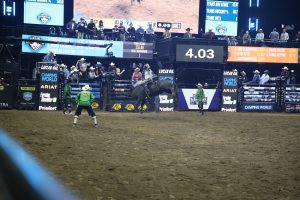
Photo Credit: Alexander Bernhardt Bloom
IT ALL AMOUNTS to a very particular rhythm for a spectator sport and demands a particular sort of attention on behalf of the crowds there to see it. Many rides end prematurely and many matches end with low scores. There are lengthy breaks for the positioning of the bulls and the crews of support staff who help the riders to their backs, as well as those who redirect the bull after the rider falls and help to corral it once again safely. The action lasts ten seconds at a time at best, and the periods of time in between rides are long and, especially for a crowd in Downtown Brooklyn, filled with commentary offering explanation about what has just happened so quickly.
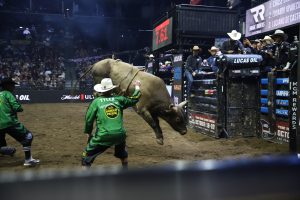
Photo Credit: Alexander Bernhardt Bloom
With four games and eight teams there are forty rides to see and therefore thirty-nine natural gaps in the action for filling. Imagine the open air time. To occupy it on Friday, the first night of the weekend-long stint at the Barclays, members of the broadcast team took to the stands to interview attendees and offer gently-chiding comic entreaties on subjects like men in tight jeans and the proper use of agricultural equipment. They heaped scorn playfully on the poor performance of New York natives with country music trivia, gave an introduction to a performer of a different sort who twirled flaming lassos, and adjudicated the giveaway of truck tires and leather boots.
This evening, the spectators in attendance for this very particular event were having all of it. They took the laugh lines good-naturedly and listened intently to the instructions on how to watch the moments of action, sipping ultra-light beer and alcoholic seltzer under the brims of blemishless Stetson hats in stands choked with illicit cigar smoke.
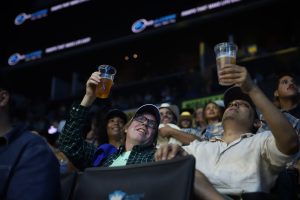
Photo Credit: Alexander Bernhardt Bloom
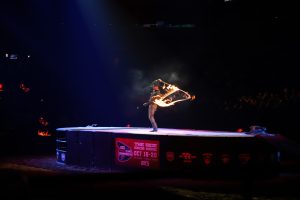
Photo Credit: Alexander Bernhardt Bloom
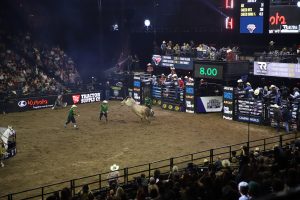
Photo Credit: Alexander Bernhardt Bloom
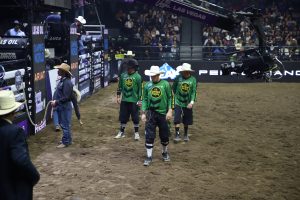
Photo Credit: Alexander Bernhardt Bloom
THE MAIN EVENT ARRIVED with the last of the four “games” that evening, which pitted the New York Mavericks, making their first ever homestand, against the visiting Kansas City Outlaws.
The Outlaws’ Kevin Hevalow was the first out of the chute, clinging to the back of a ferocious creature called Martin’s Maniac. He kept clinging for what looked like the full eight seconds required before the bull flung him off, Hevalow spinning like a baton to the combed dirt below. But he was shy a tenth of a second, determined the judges, after a challenge posed by the Mavericks’ coaching team. Hevalow and his Maniac recorded no score.
The Mavericks’ Leandro Machado, whose hometown in Brazil is named, in Portuguese, New Hope, offered little of that to fans of the New York squad, him lasting just 1.61 seconds atop a boisterous, jet-black bovine called Oreo, who proceeded to buck him once up into the air, catching him and bucking him again off his back side before Machado made his full descent to the earthen pitch.
The next rider for the Outlaws realized a similar outcome, and it seemed that the Mavericks’ first defense of their homecourt was set to be a snooze and not a barn-burner, but then Hudson Bolton mounted his bull in New York’s metal cage. The gate swung open and out they went and the crowd looked on incredulously while Bolton held on and held on, just making the required time before tuck and rolling to the floor, the team of handlers guiding the belligerent hoofs to a safe distance as the crowd took to its feet with the Beastie Boys’ anthem rocking the stadium: No Sleep Till Brooklyn. His score was 86 and he put the Mavericks on the board.
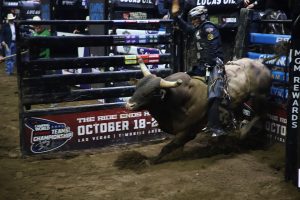
Photo Credit: Alexander Bernhardt Bloom
The Outlaws continued to draw blanks and the Mavericks appeared to be finding their stride. The crowd in the densely occupied Barclays stands were finding it along with them. When Davi Henrique de Lima overcame a challenge that alleged he’d illegally touched his bull’s back with his free hand he earned another 86 points for his crew and the occupants of those stands howled in appreciation.
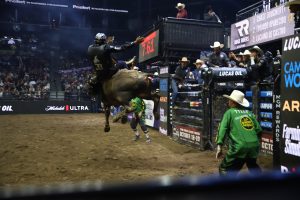
Photo Credit: Alexander Bernhardt Bloom
Finally the Mavericks won it mathematically, Kansas City retired from the possibility of a win with three riders remaining between the two squads.
Cassio Dias, recently-decorated bull riding world champion, would close the lame duck session for the Outlaws with yet another buck off, the demand of the required eight seconds seemingly impossible to achieve for the members of his team this evening.
Dias’s deflating exit brought up Mauricio Gulla Moreira, who closed for the Mavericks handily. He held on to a freight-train of a bull called Bandito Bug – whose buck off percentage is a greedily-achieved 79% – for eight seconds and then some, the crowd roaring deafeningly as he swaggered off the packed soil pitch having added one more ride and another 88.25 points to the victorious roster’s winning tally, a shut out to celebrate their first homecoming. They’d win again on Saturday night in similar form.
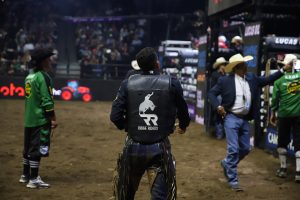
Photo Credit: Alexander Bernhardt Bloom
THE VALUES USUALLY ASCRIBED to cowboys and rodeo-showmen – pioneering spirit, rugged individualism, go-it-alone mentality and triumphalism – might seem incongruous with team sport dynamics where humility and selflessness are a requisite.
But for all the “I”s among the bulls and their riders in Brooklyn those nights they did indeed spell out teams – what’s more, teams pursued by an enthusiastic following. A safe wager might have been made that the spectators in the Barclays that weekend didn’t know their names and couldn’t recognize one rider from the next while they watched. Nevertheless, those spectators were there cheering on the home roster, and as fiercely and jubilantly as do crowds in that same space for the Nets and Liberty.
Perhaps, like the rugged individual’s pastime adapted here effectively to team sport, bull riding and Brooklyn aren’t so incompatible after all.
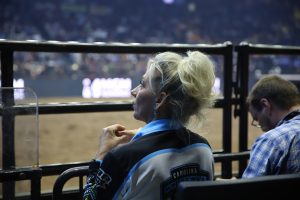
Photo Credit: Alexander Bernhardt Bloom


